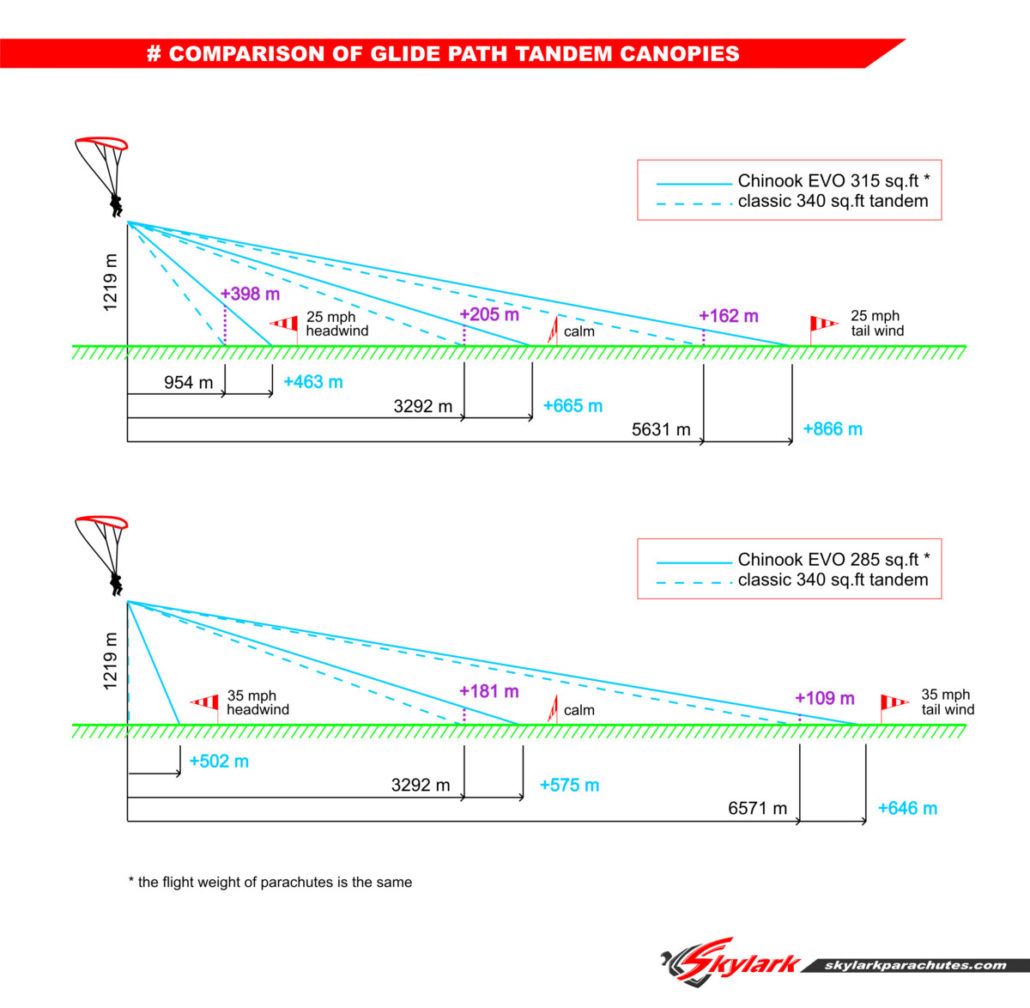Comparison of tandem glide paths
To demonstrate the high performance of the new Chinook EVO tandem, we prepared a small aerodynamic calculation of the glide paths of the classic 340-foot tandem and Chinook EVO in S and M sizes (285 and 315 sq ft). The main condition is that the all-up weight of the systems must be the same.
For wind power, the maximum values were chosen, which are often observed when operating tandems on windy drop zones. This is the standard 25 mph (11.2 m/s) and its limit 35 mph (15.7 m/s).
We considered three options for landing with different wind directions at entry – headwind, tailwind and calm. In each case, the additional distance along the horizon and the height excess of the V-ribs Chinook EVO, relative to the possible landing point of the tandem made according to the classical scheme, were calculated.

As you can see, with all combinations of wind power and direction, the Chinook EVO is capable of moving forward confidently and provides the tandem master an acceptable target sight line, and passes the potential landing point of the classic tandem with an excess height of 100 to 400 m!
We note that although V-ribs require more packing volume for the canopy, however, the volume of the Chinook EVO in size M is approximately equal, and size S is already noticeably smaller than the size of the classic tandem!
Enjoy!
Skylark Company.

